
We collect basic website visitor information on this website and store it in cookies. We also utilize Google Analytics to track page view information to assist us in improving our website.
Written by: Cole White
When you call into mind a picture of this country, there's a good chance you're picturing the Boreal Forest. I know I can't help but picture these northern woodlands, which were idealized and made famous by the Group of Seven's influential 20th century landscape paintings, and are perhaps now hardwired into many people's minds as the definitive image of our land's wilderness.
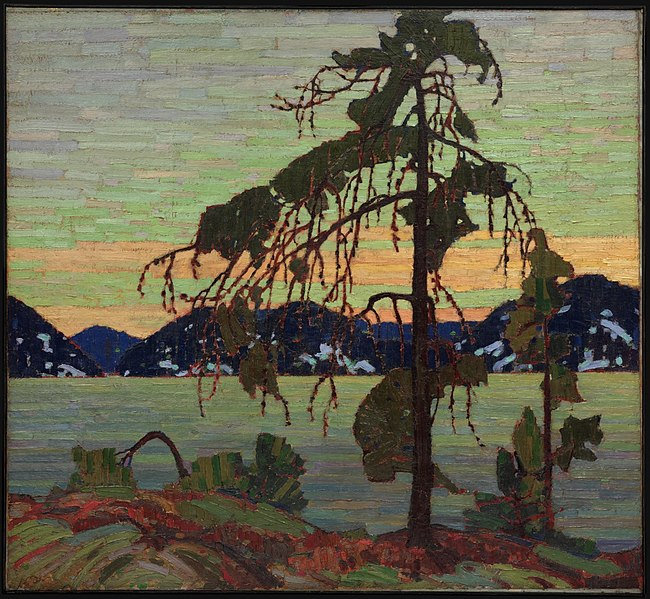
The Jack Pine, by Tom Thompson, 1916-17. The National Gallery of Canada.
However, while the Boreal Forest is vast, it represents only one of our incredibly diverse ecological communities, which include rainforests, alpine regions, and even desert landscapes! The expansive ecology of our country can be classified into 15 terrestrial ecozones (learn about these on our Find My Ecozone web map), or eight forest regions. Within these, there's a lot to discover.
One forest region, unknown to many Canadians, is found in our eastern temperate broadleaf and mixed forests. These comprise a unique system generally called the Acadian Forest by settlers. Even as someone who'd grown up on the East Coast, this was something I'd never heard of until pursuing a horticultural diploma and becoming more interested in local species.
Formed as glaciers retreated north out of what we now call the Maritime provinces, Quebec, and New England, the Acadian Forest is a relatively small area, only perhaps 8% the size of the Boreal Forest. However, nested within it are several distinct and variable habitats. In these communities, flora and fauna work together in ways not found anywhere else, representative species show their understated beauty, and some very rare plants take refuge.
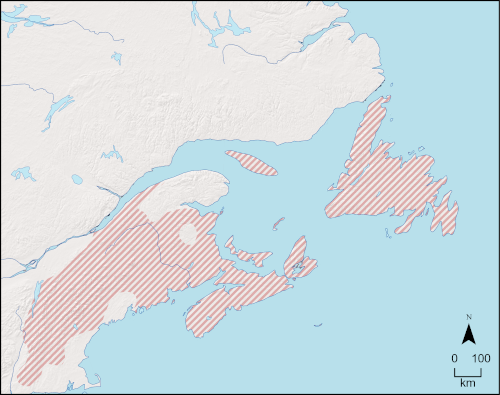
Approximate extent of the Acadian Forest.
This area also roughly corresponds to the extents of the Wabanaki Territory, and has been understood by the Mi'kmaq and other Indigenous peoples of the Northeastern Woodlands to be the place where the sun is first welcomed by the people of Turtle Island. The name 'Wabanaki' means 'People of the Dawn'.
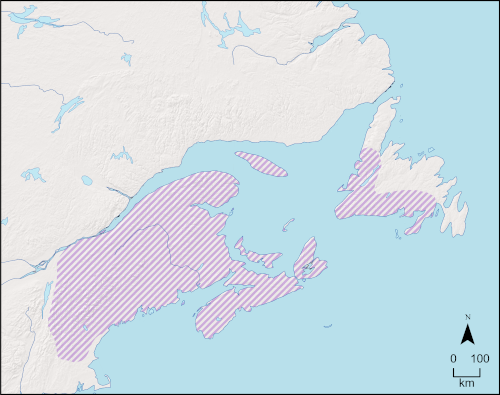
Approximate extent of Wapane’kati. This map is derived from a more detailed graphic found at https://en.wikipedia.org/wiki/Wabanaki_Confederacy
Since the arrival of European settlers, many forested areas in the Acadian Forest have been lost to logging or agriculture, and disease has taken its toll on native Beech and Ash populations. Less than 1% of the forests prior to colonization remain today, but Hemlocks of over 100 years old can still be seen in preserved areas such as the Kentville Ravine in Nova Scotia.
An East Coast gardener looking for native trees to include in their landscapes could consider the following key species (click the View Plant button for more information on each):
Red Spruce(Picea rubens)
|
 |
Yellow Birch(Betula alleghaniensis)
|
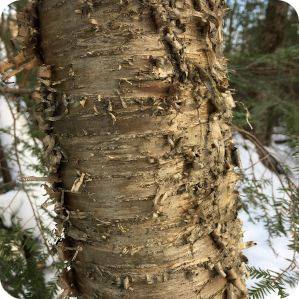 |
Northern Red Oak(Quercus rubra)
|
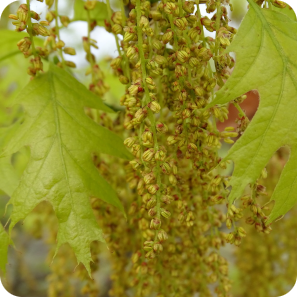 |
Sugar Maple(Acer saccharum)
|
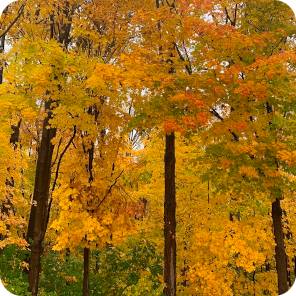 |
Eastern Hemlock(Tsuga canadensis)
|
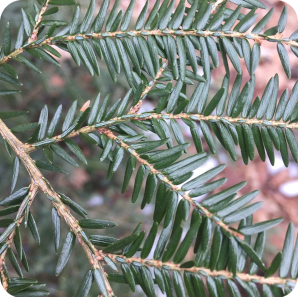 |
Understated beauty can be found in the bogs and wetlands of eastern woodlands, where Spaghnum (Peat) Moss, edible plants including Blueberry and Cranberry (both in the genus Vaccinium), and Rhodora, our native rhododendron, thrive in the acidic soil. Orchids including Rose Pogonia, White Fringe Orchid, and Dragons-Mouth are on display here, as well as carnivorous Pitcher Plants and Sundews. In marshes, Blue-flag, Wild Calla, and Waterlilies are common.
Roundleaf Sundew(Drosera rotundifolia)
|
|
Rose Pogonia(Pogonia ophioglossoides)
|
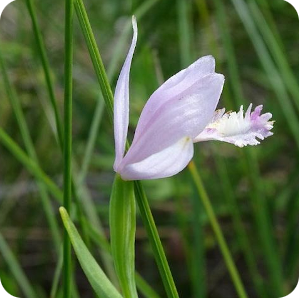 |
Waterlily(Nymphae odorata)
|
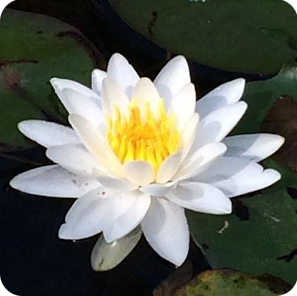 |
Rugged coastal area such as Peggy's Cove and Cape Split harbour lichens, mosses, and other flora adapted to growing in these wild places where almost no soil exists. Plants include Rock Polypody (actually a small fern), Labrador Tea, and Sedums (which I've seen tenaciously clinging to vertical cliff faces overlooking the Atlantic)! Trees in these habitats tend to assume a stunted form to withstand high winds and salt spray.
Rock Polypody(Polypodium virginianum)
|
 |
Creeping Juniper(Juniperus horizontalis)
|
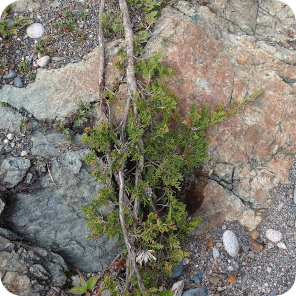 |
Labrador Tea(Rhododendron groenlandicum)
|
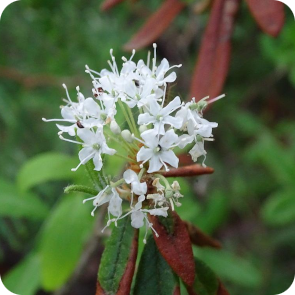 |
Moving inland, you might find sandy heath barrens, areas which could not be more different from the stereotypical idea of Canadian wilderness! Sand barrens have historically been generated by natural wild fires, but research in the Annapolis Valley suggests that in modern times, they've established themselves on abandoned farmland. These rare areas are now threatened by agriculture and ATV traffic. Pines, Poplars, and ericaceous plant species take root in these dry, nutrient-poor soils, as well as uncommon plants like the provincially endangered Canada Frostweed (Crocanthemum canadense).
Canada Frostweed. Photograph by Melinda Thompson.
The Acadian Forest continually offers surprises for anyone willing to look for them. For example, the endangered Eastern Mountain Avens (Geum peckii), which appears in two small disjunct locations on Digby Neck and Brier Island, popular whale-watching destinations in the Bay of Fundy. This plant exists on just one other location on earth -- alpine habitats in New Hampshire's White Mountains. We don't know why this special plant has chosen to persist in two very different habitats and nowhere else, but if we can continue to protect it and learn from it, it may have a lot to teach us.
A visit to the Harriet Irving Botanical Gardens' constructed habitats (which they describe as 'living classrooms') in Wolfville, Nova Scotia would be an ideal way to start learning and exploring the Acadian Forest system. You could also go about this virtually by exploring observations and projects from this part of the world on iNaturalist.
If you're a plant person on the East Coast, you can help make the Network of Nature database better reflect the biodiversity of these communities by submitting your plant photos. If you have any other suggestions or questions, let us know!
Join our email list to receive occasional updates about Network of Nature and ensure you get the news that matters most, right in your inbox.